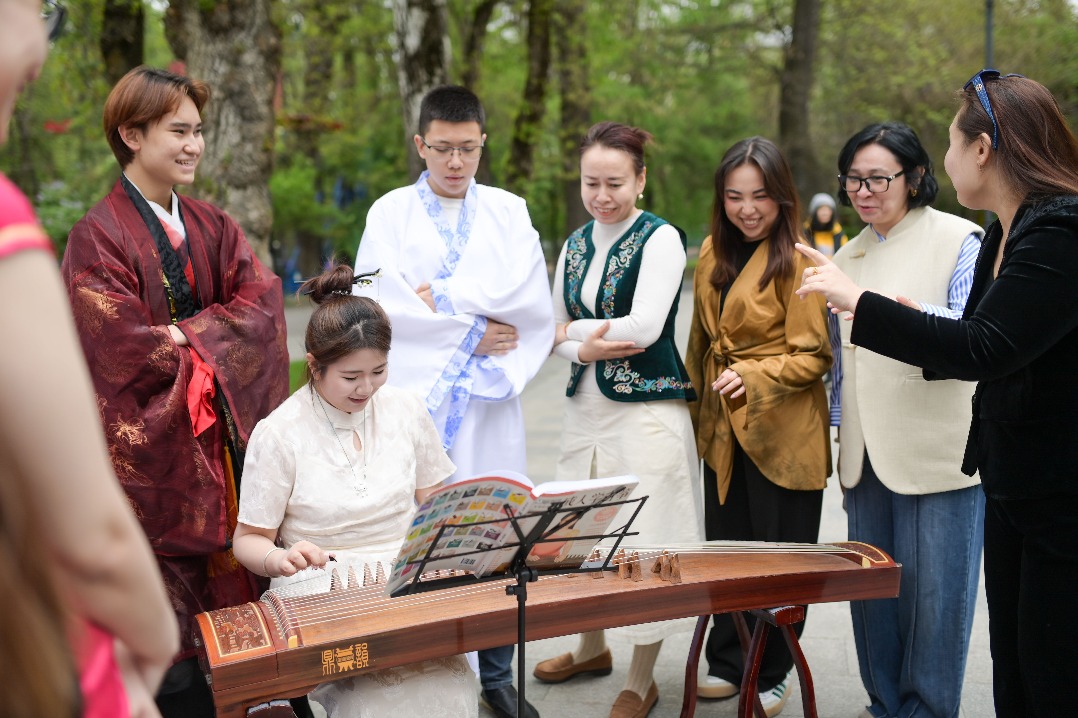Yungang Grottoes a repository of culture


Cultural and Natural Heritage Day, observed on the second Saturday of June, provides an ideal opportunity to contemplate the invaluable cultural legacy preserved in grottoes.
The Yungang Grottoes in Datong, Shanxi province, were built during the Northern Wei Dynasty (386-534). As China's first royally commissioned Buddhist cave complex, they are part of the "Three Great Grottoes of China" along with the Mogao Grottoes in Dunhuang, Gansu province, and the Longmen Grottoes in Luoyang, Henan province. Recognized for their extraordinary artistic and historical significance, the Yungang Grottoes were declared a UNESCO World Heritage Site in 2001.
Shanxi province is home to a wealth of ancient grottoes and caverns. Among them, the Yungang Grottoes are unparalleled. They comprise 45 major caves and more than 50,000 statues which show the evolution of Chinese Buddhist art. The magnificent carvings reflect not only the Northern Wei Dynasty's devotion to Buddhism but also the cultural exchanges between China and other civilizations along the ancient Silk Road.
Therefore, their protection is of major significance to both China and the world. The fact that historical cultural heritage is an irreplaceable resource means its protection should be a top priority, and that the development of tourism should avoid excessive commercialization. What's more, the importance of more deeply exploring the historical contents of the Yungang Grottoes can help scholars study the impact of the exchanges between different ethnic groups, and enrich the sense of a shared community of the Chinese nation.
It is for this purpose, as well as to better safeguard the Yungang Grottoes, that the Yungang Research Institute was established on Feb 19, 2021. Prioritizing relic protection, the institute emphasizes interdisciplinary collaboration, strengthens academic research, uses innovative digital technology, and revitalizes exhibition and utilization efforts.
In 2023, the National Cultural Heritage Administration and the Shanxi provincial government signed an agreement to jointly develop the institute. Several academic platforms have since been established to advance Yungang studies, providing a foundation for innovative research, key technological development, and resource sharing. Realizing that to better protect the cultural heritage, it's necessary to cultivate high-level talent, the center has strengthened cooperation with Shanghai University and Shanxi University.
However, besides cultural relic preservation, issues such as damage caused by water and unstable rocks in the caves need to be addressed. That's why efforts have now shifted toward preventive conservation and meticulous maintenance.
A special plan for Yungang Grottoes protection is being implemented, establishing a precision monitoring network covering both relics and their environment, which includes surveying cave deterioration, routine maintenance, and improving standards for conservation and restoration.
The maintenance of the eastern and western sections of the Yungang Grottoes has been completed, and emergency reinforcement projects have been carried out to fix the unstable rocks around some caves, as well as for the protection of painted sculptures and murals in some halls.
Harnessing technology can rejuvenate ancient cultural heritage sites, infusing them with fresh and inspiring energy.
In the past two decades, Yungang's digital initiatives have evolved into a comprehensive philosophy, encompassing scientific research, integrated application and intelligent development. The institute has completed digital data collection for two-thirds of the caves, with the digital reconstruction and 3D information system for Cave 13 overcoming technical challenges in high-precision 3D modeling of large-scale, high-relief cave temples. And the completion of an advanced computing center, the first of its kind in China, marks a major leap in digital preservation.
These digital archives ensure permanent preservation, supporting preventive protection, academic research and cultural dissemination. By transforming data outcomes from single-point applications to large-scale utilization, the institute has built an intelligent digital platform combining technology, art and academia.
Through innovative practices, the institute has created new paradigms for living cultural heritage transmission, integrating Yungang culture into public life.
The Yungang Grottoes embody the vigorous spirit of the Northern Wei Dynasty and the inclusive grandeur of the Chinese nation. The Yungang Research Institute will fulfill its responsibilities, thus ensuring the protection and promotion of, and research on this national cultural treasure.
The author is director of Yungang Research Institute.
The views don't necessarily reflect those of China Daily.
If you have a specific expertise, or would like to share your thought about our stories, then send us your writings at [email protected], and [email protected].


































